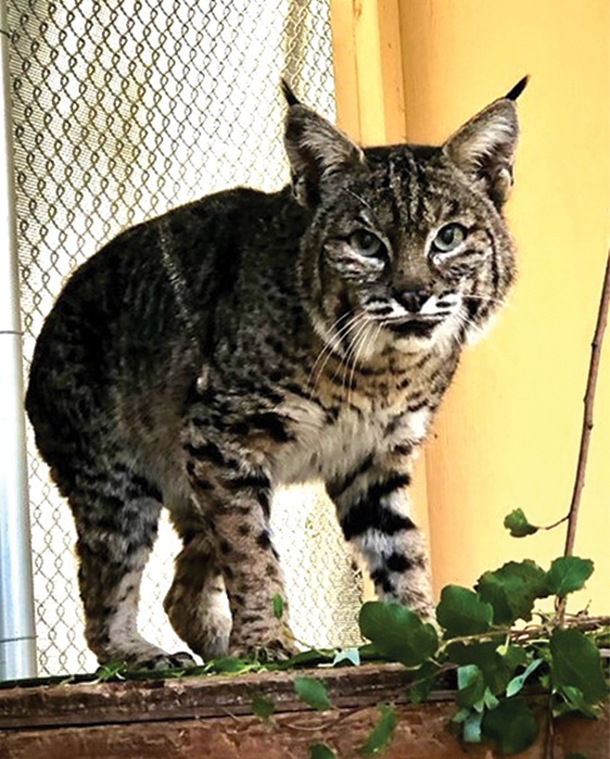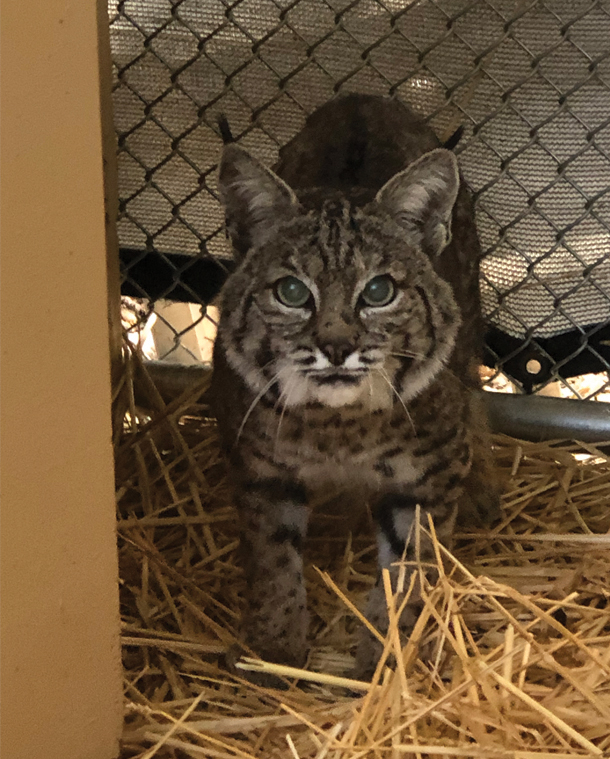A Tail of Survival
By Cori Carlson, Administrative Coordinator
Bobcats, named for their short or “bobbed” tails, are about twice the size of an average domestic cat. These wild cats have white spots and short black tufts of hair on the top of their ears. Their brownish coats with black spots help them camouflage in thick brush and rocky areas. Bobcats are solitary animals who are mostly active at dusk and dawn, but they are sometimes seen during the day hunting small mammals, lizards, and snakes. Like the domestic cat, the wild felines use their whiskers to help them navigate their surroundings – like people use fingers.
California Wildlife Center recently treated an almost 8-pound bobcat who was rescued from a burn area in Sierra Madre after the Eaton Fire. On January 29, the bobcat was admitted to Pasadena Humane emaciated, with burns on her paws and singed fur on her backside. During a more extensive exam the following day, the medical team placed the cat under sedation and found exposed bone on her paws.
They soaked her paws in warm water and scrubbed them with an antiseptic to prevent any infection. Once her paws were dried and medicated, multiple layers of bandages with medical-grade honey were applied to help with healing. For the next month, the hospital staff debrided, cleaned, medicated and wrapped the cat’s paws while closely monitoring her progress.
On March 23, the bobcat was transferred to California Wildlife Center, where she would have an outdoor enclosure of her own for the final stage of her rehabilitation. She spent weeks reacclimating to her natural environment and building up strength. By late April, she was running, jumping, and climbing without any signs of physical limitation. Three months after her rescue, the resilient bobcat was released back into the wild near where she was found.
Female bobcat in care at CWC
Bobcat prior to release


